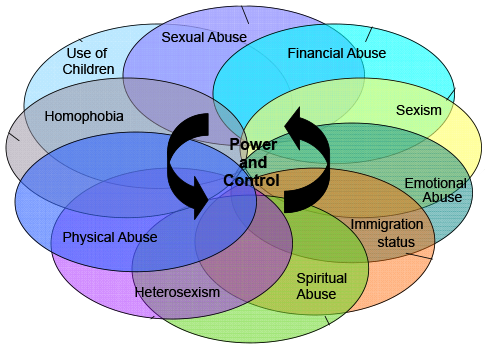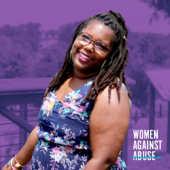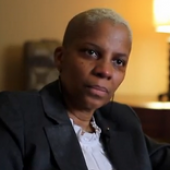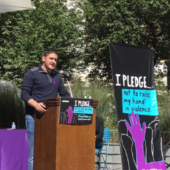Types of Abuse
Intimate partner violence can occur in many different forms.
Regardless of whether it is physical, emotional or takes some other form, abuse often follows an escalating pattern in which the controlling behaviors worsen over time.
The abusive partner may use oppression systems already set in our society to assert his or her priviledges against the other person.

Physical Abuse
Perhaps the most recognized form, physical abuse may include behaviors such as:
- Hitting, slapping, punching, kicking
- Burning
- Strangulation
- Damaging personal property
- Refusing medical care and/or controlling medication
- Coercing partner into substance abuse
- Use of weapons
Emotional Abuse
Emotional abuse occurs when an intimate partner seeks to control his/her loved one by:
- Name calling, insulting
- Blaming the partner for everything
- Extreme jealousy
- Intimidation
- Shaming, humiliating
- Isolation
- Controlling what the partner does and where the partner goes
- Stalking
Sexual Abuse
Sexual abuse is not about sex. It is about power, and includes any sexual behavior performed without a partner’s consent. Examples include:
- Forcing a partner to have sex with other people (human trafficking)
- Pursuing sexual activity when the victim is not fully conscious or is afraid to say no
- Hurting partner physically during sex
- Coercing partner to have sex without protection / sabotaging birth control
Technological Abuse
This form of abuse includes the use of technology to control and stalk a partner. Technological abuse can happen to people of all ages, but it is more common among teenagers who use technology and social media in interact in a manner often unmonitored by adults. Examples include:
- Hacking into a partner’s email and personal accounts
- Using tracking devices in a partner’s cell phone to monitor their location, phone calls and messages
- Monitoring interactions via social media
- Demanding to know partner’s passwords
Click here to learn how to protect yourself from technological abuse (provided by the National Network to End Domestic Violence).
Financial Abuse
Any behavior that maintains power and control over finances constitutes financial abuse. Examples include causing a partner to lose their job through direct and indirect means, such as:
- Inflicting physical harm or injury that would prevent the person from attending work
- Harassing partner at their workplace
- Controlling financial assets and effectively putting partner on an allowance
- Damaging a partner’s credit score
Abuse by Immigration Status
There are specific tactics of abuse that may be used against immigrant partners, including:
- Destroying immigration papers
- Restricting partner from learning English
- Threatening to hurt partner’s family in their home country
- Threatening to have partner deported
It is important to remember that in the U.S. undocumented immigrants have rights and protections, and that in the case of an emergency, contacting the police should be a priority.
Women Against Abuse has bilingual staff, and also uses Language Line to provide services to people of any language. For information about resources for immigrant victims of domestic violence, contact:










